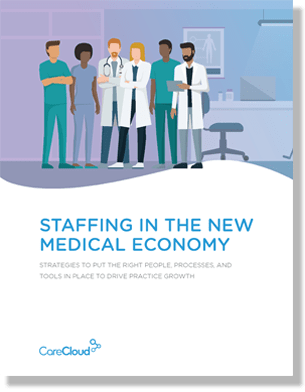What is Ambulatory Coding?
To get acquainted with ambulatory coding, knowing about ambulatory surgical centers (ASC) and their codes is important. Ambulatory or outpatient surgery offers same-day surgical care for a wide range of procedures.
Definition of Ambulatory Surgical Centers (ASCs)
Ambulatory Surgical Centers (ASCs) are medical facilities that specialize in outpatient surgical services. These centers offer surgeries that do not require patients to stay overnight or be admitted to the hospital. Some common examples include cataract operations, colonoscopies, and other small orthopedic surgeries. ASCs follow certain billing guidelines, higher payment rates, and governmental regulations to ensure quality healthcare.
ICD-10-CM Codes in Ambulatory Coding
Ambulatory Coding’s critical pillar is the International Classification of Diseases 10th Revision Clinical Modification (ICD-10-CM) codes, which systematically code patients’ diseases. Codes provide information on what is wrong with the patient and thus help develop accurate documentation and reporting. Interpretation becomes more consistent with ICD-10-CM codes, improving patient care, simplifying billing processes, and improving reimbursement accuracy by promoting error-free claim submission to insurance companies.
AMBIGUOUS AND ENIGMATIC CODES IN AMBULATORY CODING USING HCPCS AND CPT
HCPCS and Current Procedural Terminology (CPT) codes are essential in ambulatory coding. The surgical procedures in the ASCs and ancillary services are classified according to CPT codes. This code is very useful in addressing reimbursement issues by streamlining billing processes for Medicare.
THE NATIONAL CORRECT CODING INITIATIVE (NCCI)
National Correct Coding Initiatives (NCCI) are one of the most reliable approaches CMS has used technologies to guarantee appropriate coding practices. It identifies code pairs that should not be reported together and assesses medical necessity, thereby preventing inappropriate coding practices. Compliance with NCCI guidelines is crucial for providers billing Medicare and private payers.
Ambulatory Coding Modifiers
Modifiers are extremely important in providing additional details about the procedures and services they represent. These codes specify whether a service was repeated within a session, where the service took place, or whether anesthetics were used.
Advanced Outpatient Coding Techniques
Mastering outpatient coding requires advanced techniques for handling difficult situations. In other words, it is essential to grasp the procedures that may be bundled or unbundled. Bundling occurs when multiple procedures are combined into a single code since they are usually performed together to optimize reimbursement and facilitate billing procedures. Conversely, unbundling involves separating bundled procedures into individual codes when justified by medical necessity, ensuring accurate reimbursement for each distinct service rendered.
Hierarchical condition category (HCC) coding can also be integrated into ambulatory coding practices to improve risk adjustment and increase revenue for chronic disease management. HCC codes rank patients according to the severity of their illnesses, thus enabling healthcare practitioners to appropriately document the complexity of patient care and receive appropriate compensation.
Compliance in Coding and Regulatory
Maintaining compliance with the coding guidelines and adherence to healthcare regulations is essential in a dynamic regulatory landscape. Medical service providers must stay current with coding guidelines, regulatory requirements, and payer policies to minimize compliance risks while maximizing revenue integrity. Regular audits and checks for compliance help identify and correct errors in the codes, fostering trust with payers and regulatory agencies.
Compliance with the Health Insurance Portability and Accountability Act (HIPAA) protects patients’ privacy, besides shielding healthcare organizations from legal liabilities. Compliance helps healthcare providers maintain ethical standards, protect patients’ information, and strengthen their reputation as reliable healthcare facilities.
Technological advancements and automation have transformed ambulatory coding. For instance, electronic health record (EHR) systems, equipped with built-in coding functionalities, simplify the workflows of healthcare providers in terms of coding, automate the code assignment process, and provide real-time documentation. This minimizes errors in coding and enhances productivity.
Also, artificial intelligence (AI) and machine learning algorithms allow medical professionals to analyze large volumes of data sets, detect patterns in coding, and enhance the accuracy of the codes. AI-assisted coding tools offer continuous suggestions on what should be coded once a doctor identifies a condition requiring a code. They flag potential mistakes associated with errant entries by ensuring all codes comply with set regulations.
Advancement in Clinical Documentation
Good clinical documentation forms the basis for accurate ambulatory coding by providing comprehensive insight into patient encounters and services rendered within the hospital setting. Also, interdisciplinary collaboration among healthcare providers, coders, and clinicians improves documentation accuracy, which leads to alignment with coding guidelines and regulatory requirements.
Conclusion
Understanding the fundamentals of ambulatory coding is important for medical professionals navigating an intricate landscape of outpatient surgical services. The adherence to ASC coding guidelines, proper utilization of codes, and compliance with applicable regulations, thereby minimizing the billing process and optimizing reimbursement. Promote consistent and clear clinical documentation, structured templates, and standardized coding conventions to facilitate streamlined coding workflows by reducing ambiguity.




